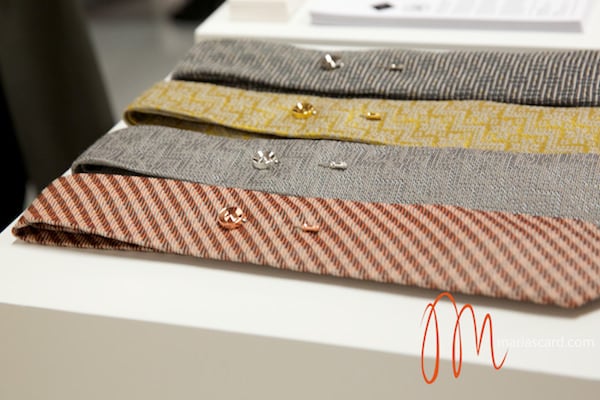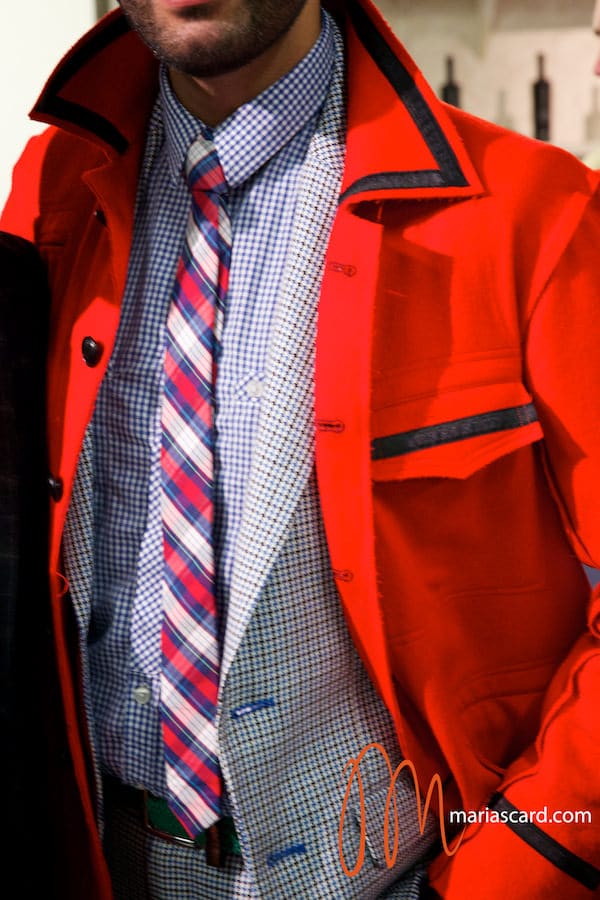
Tie Use in Decline – Market Adapting to Changes
The fashion world is driven by change – that’s what makes it so interesting and diverse, but it’s also the very thing that makes it so bewildering. Changing trends have always represented a major challenge for fashionable men, but these days there’s something else to tackle – let’s call it the sartorio-economic climate, for the sake of grandiloquence if nothing else. Economics has, at present, a big say on the subject of menswear, because it alters the environment stylish institutions operate within. Those that can’t change with the times do what all in-adaptable species do: they go extinct.
The latest fashion icon to go into administration is Tie Rack, following hot on the heels of Nicole Fahri. The high street staple expects to close all but a handful of its airport branches by the end of 2014. Once upon a time, it would have been unthinkable that an institution like Tie Rack would have reason to go under. It seemed perfectly adapted to the fashion environment – the business world was its bread and butter thanks to the neck tie’s enduring place in the formal wardrobe. Moreover, an inexhaustible stream of special occasions made sure that even those unaccustomed to business dress were familiar with the spots and stripes, plaids and paisleys, of Tie Rack’s silk-festooned walls. So what environmental shift, what Extinction Level Event, was powerful enough to bring about the demise of this sartorial stalwart? It’s easy to blame the economic downturn. Surely that alone has made conditions untenable for some traders? Well, that’s true – we’ve seen plenty of businesses disappear because they’ve struggled in the post-credit-crunch epoch. But if the neck tie is, in fact, a mainstay of business dress, wouldn’t that make Tie Rack recession-proof?
Fading of Tie Use
Clearly there’s something else going on. Fashion experts are well aware of the fact that demand for Tie Rack’s wares has been in decline for a while, and it’s all down to changing attitudes to style in the workplace. Ever since the late 1990s, the tie has seen its influence fade. Slowly but surely, everyone from estate agents to politicians have abandoned the neck tie and its perceived formality. In one sense, the neck tie has been made a scapegoat for more inflexible attitudes to working life – attitudes that don’t belong in the modern business sphere. Now, in an age when hotshot media outfits have pretty much done away with dress codes altogether, it’s all too easy to appear over-dressed. The ‘critical mass’ of formal dressing has diminished and diminished; the tie itself is largely seen as a step too far.
Is the neck tie really a fashion dinosaur at odds with the modern world of menswear? A lot of people think so and if trends are in any way determined by popular perception – which is surely the case – then there’s an argument for crying anachronism at the very sight of a neck tie.These days, open necked shirts are synonymous with a sense of readiness in the workplace, a flavour of flexibility and a commitment to the real issues at hand. Designers like Paul Smith and Ted Baker have championed this approach; newscasters and politicians have bought into it; business owners and executives have caught on, aware that they can make just as positive an impression with a well-cut suit and a fitted white shirt. Removing the tie removes some of the artifice – it simplifies and clarifies, celebrates no-nonsense assertiveness over gimcrack ostentation and provides a welcome antidote to the pure theatre of behaviour that values form over content.
Changes in the Market
Of course, reinterpretations of the neck tie have seen it incorporated successfully into the casual wardrobes of indie dressers, with knitted and skinny varieties displaying a level of versatility absent from silk numbers. This has bought the neck tie fashion credentials with a younger audience. Brands like Simon and Simon have proven that sporting a tie or not can be worth it either way. However, there is a sense that this new interpretation is more about self-expression than uniformity – it’s a way to stand out rather than a way to fit in. This trend isn’t enough to prevent demand for neckwear from dwindling. Throw in the fact that skinny ties and knitted ties are being sold cheaply by high street retailers aimed at younger audiences, like Topman, and you begin to see how happenstance has conspired against shops like Tie Rack.
Unless your dress code at work specifically demands neckwear, you’re at liberty to decide whether to join the tie-break. The positive news is that getting of the tie isn’t going to cause a stir. Too many figureheads of fashion have already given it the heave-ho.
However, if you do choose to retain it was part of your working wardrobe, it does give you an opportunity to stand out from the crowd. Just be prepared take advice on the finer points, such as width, fabric, pattern and knot.


















